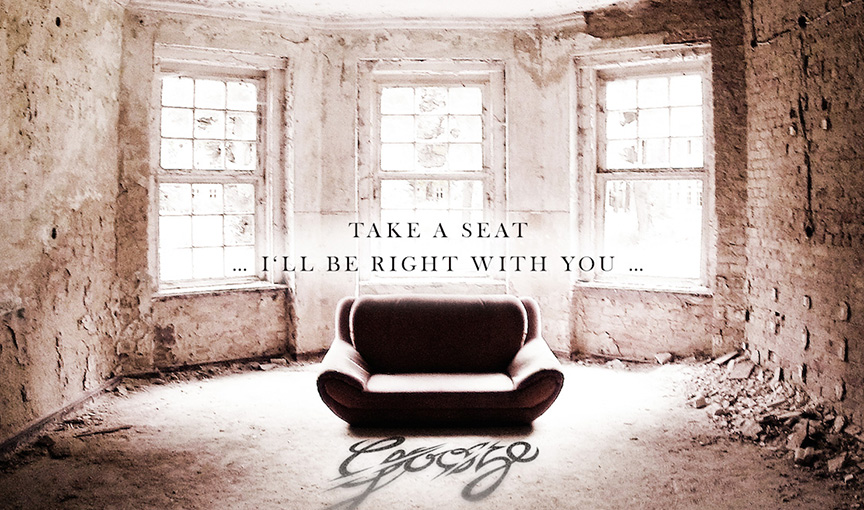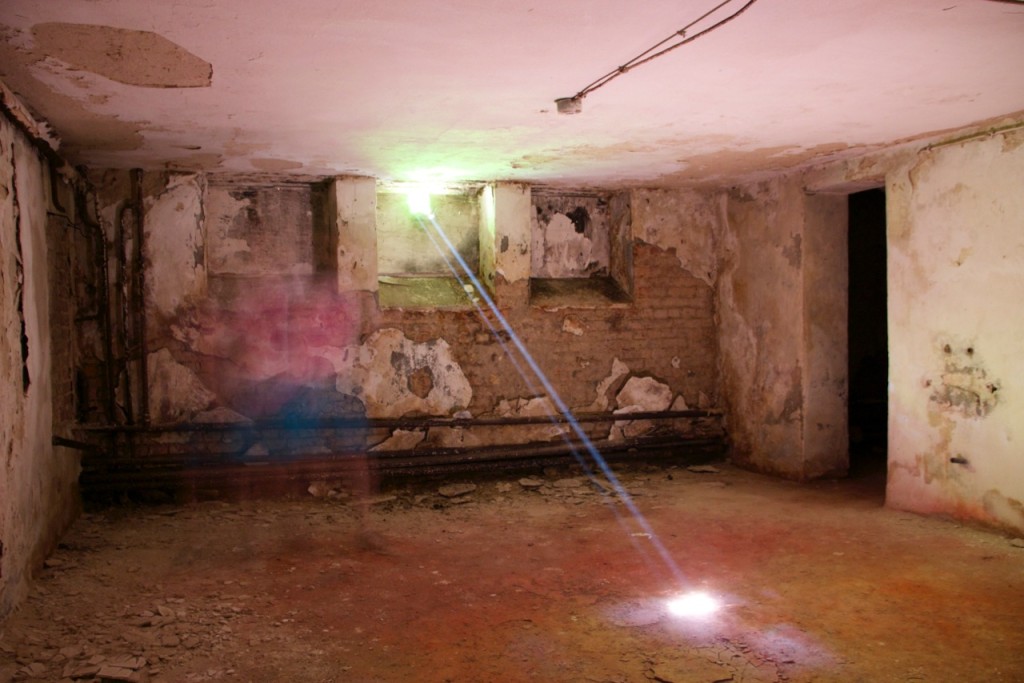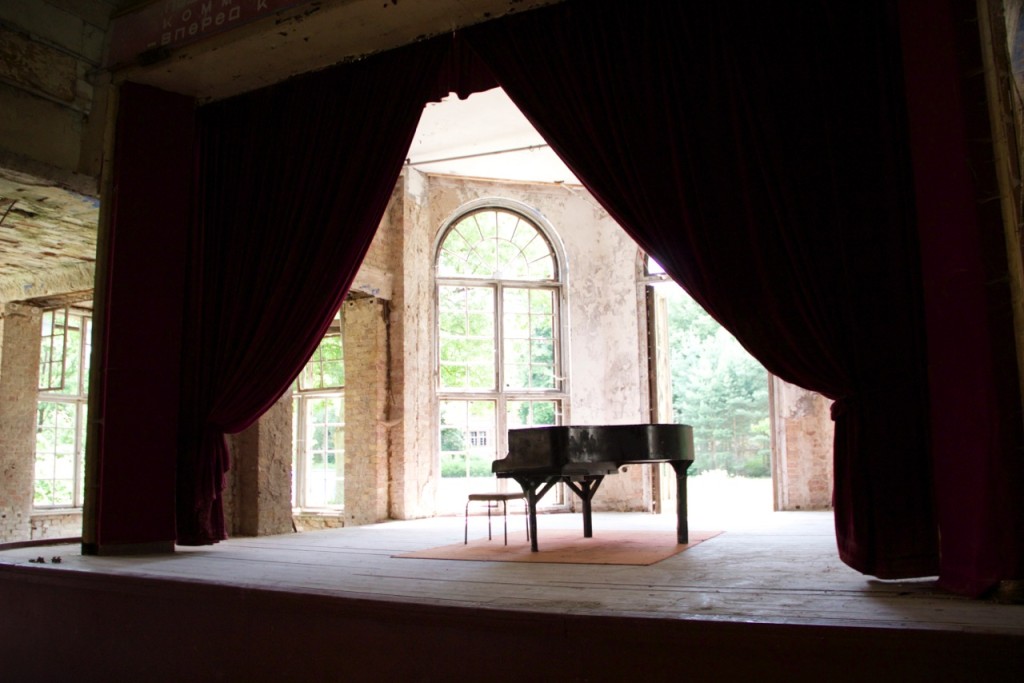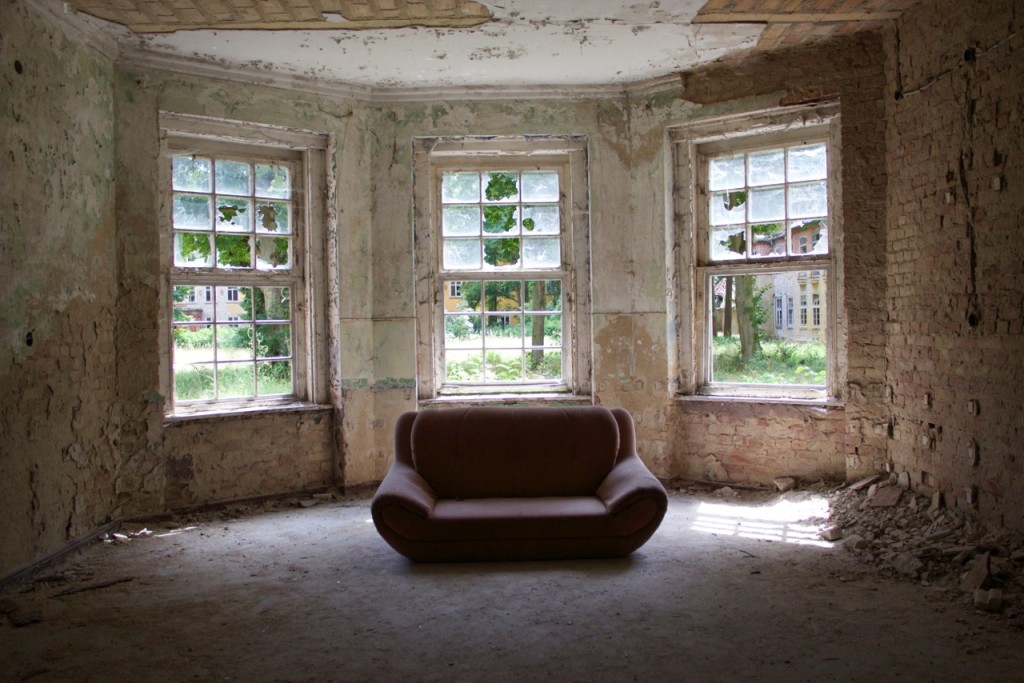Over the next several weeks, we’re spotlighting the top 20 3D Jam experiences chosen by the jury and community votes. These spotlights will focus on game design, interaction design, and the big ideas driving our community forward.
Finishing in 12th place, Fiery Things’ Gooze is a survival horror demo based on a real abandoned hospital near Berlin. The game, available for the Oculus Rift, involves solving puzzles to travel from room to room – all while avoiding strange entities. We caught up with creator Daniel Wiedemann to ask about the real-life inspiration behind the demo.
What made you decide to start your own game studio?
During my career as an art director in an ad agency in Hamburg, Germany, I created several very ad-related mini games, but never “just” for entertainment purposes only, even though this had always been my childhood dream. So I decided to move to London and do a MSc in Creative Technology on top of my Diploma in Communication Design. In 2013, I created my first real entertainment-only game called LizzE – And the Light of Dreams, a third-person hack and slay.
LizzE by the way, among other techy features, already made use of the Leap Motion Controller as an optional input device. Rival Theory became interested in the project, as I made good use of their AI engine in the game, and they wanted to make a “studio showcase.” For that I needed a studio. That’s how I started with FIERY THINGS.
Personally I grew up with titles like Indiana Jones and the Fate of Atlantis, Sam & Max, Command and Conquer – as well as Doom, Quake (still love to have a Quake 3 Arena match from time to time), Unreal Tournament and of course Counter Strike. But I remember FEAR to be an especially intriguing experience as it combined gameplay with cinematic horror storytelling in a way that made me lust for more of these goosebumps moments.
How did you arrive upon the concept of Gooze?
The title “Gooze” is derived from exactly that term – “goose bumps.” In the beginning of 2014, I started with my PhD on The interrelationship between game design, new generation interfaces and user experience in digital games. As one of my research projects, I just knew I finally wanted to create a horror game.
At that time I was already experimenting with the DK1 and also backed Virtuix’s Omni and Sixense’s STEM Kickstarters. So in theory I had this awesome VR hardware setup that could track the player’s body quite accurately and would offer a sophisticated way to interact with a VR environment. This and my conceptual thinking lead me to the idea to combine a horror environment, like being trapped in a derelict asylum, with the almost-obvious puzzle-solving capabilities of the hardware. Once I saw that Leap Motion released its VR mount, I gave it an immediate try and found that users (even though tracking wasn’t as reliable as I had hoped) were amazed by being able to see their hands in VR and interact with virtual objects.
Even though horror in VR is an extremely intriguing concept, it also comes with a downside: you need to be very careful and way more subtle in VR than in any other medium. It’s easy to overwhelm your users and scare them to an extreme like no other medium can, as they feel truly present in the environment you created. But you certainly don’t want to scare them so much, that they just take off their VR goggles, completely eliminate the experience, and maybe never play your game again.
With Gooze I wanted to create a believable but still surreal environment. A friend of mine told me about this subculture called “urbex” (urban exploring). In it, people visit almost forgotten but completely derelict and rotten places, to enjoy the certain aesthetics that come from the decay of architecture and everyday objects. So I decided to go on a trip myself, to a ruinous lung healing clinic close to Berlin, built in the late 1800s, that was later adopted by the Russians as a military hospital and then forgotten.
In this truly authentic and scary place, over two days I crept into all sorts of corners of their cellars with just my flashlight and my camera to take over 600 pictures for textures, visuals, and puzzle inspiration. Furthermore, I noticed certain scary effects that came from anomalies in the architecture that will definitely find their way into the game at some point and hopefully work as well on others in VR as they did on me.
What was it like combining Leap Motion and the Oculus Rift?
Combining Leap Motion with the Rift using the VR mount was fairly straightforward. Only when you start to aim for more precise interactions it became tricky. For whatever reason I had extremely bad tracking in my development space (maybe the paint of the walls or something) and even though tracking seemed more robust in other places it still needed some extra handling to get to a more acceptable manner of interactions. But the same issues were visible in most of the other demos I tried as well.
My personal tips for improving the VR experience are:
- Restricting the tracking of hands to a certain distance (maybe to 0.5m or 20″), as the average arm can only be so long.
- Restrict to only track the two closest registered hands at a time, as for first-person applications this is mostly likely what you want and reduces any “ghost“ hands to a minimum.
- Even though this currently isn’t implemented in Gooze, you can handle loss of tracking while holding a virtual object so that the grab itself stays active as long as the hand doesn’t get registered inside the view again (without a grabbing pose).
- A more general VR topic is performance. You want to stay as close to the current Hz setting of the Rift as possible with your frame rate, to deliver an user experience with as little nausea as possible. One way to do this is optimizing and maybe removing effects in your game like in any other, which should be done anyway. But for these momentary frame rate drops I implemented a dynamic resolution feature, that scales the internal render texture up and down according to the current situation. Not optimal but definitely an improvement on not having this feature.
In your ideal world, how do you see the VR space evolving?
Standardization of VR inputs by different devices on a node base seems important for development purposes, as we can’t require all users to use the same hardware setups (Sixense is going the right way there with their announced open SDK for example).
Wirelessness and miniaturization will also be key to be interesting for certain user groups and myself. Comparing my Rift + Leap Motion setup and the Zeiss VR One or Samsung’s Gear VR goggle, the mobility and ease of setting it up is an immediate blessing.
I think in the beginning, games will make the most of the technologies because of their interactivity. Watching 360° movies and even 360° 3D movies also seems extremely interesting, but the technology is not yet sophisticated enough, nor do filmmakers currently know what to do with it. Just imagine a movie in 360° where everything is happening all around you and you need to turn to look at things happening. How do you make sure the viewer is not missing essential parts of the plot? I think there will be interesting, maybe even partly interactive, solutions coming up for this.
What’s next for Gooze? Any plans to expand or develop further?
Even though I currently need to work on a non-VR-related children’s edutainment app about how the weather works, I certainly will develop Gooze further afterwards. It will have optional support for the Omni and the STEM system and have around 3-5 playable rooms in the beginning and most importantly some scary entities in it. There is also a plot, which will become more understandable to the user. In the end, the user will need to work his way through a believable but still surreal environment, with entities that’ll hopefully scare the sh*t out of him.
Follow Daniel’s latest forays into the real and virtual worlds @WiedemannD.






